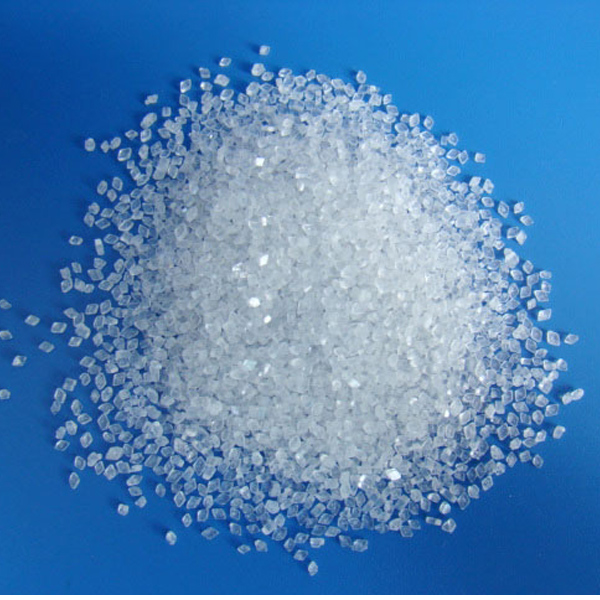Side Effects of Sodium Saccharin E954
Sodium Saccharin E954, also known as Sodium Saccharine, is a calorie-free sweetener used in sugar-free products. Though Sodium Saccharin E954 is considered safe by the Food and Drug Administration (FDA), some are convinced it has potentially dangerous health effects.
What Is It?
Sodium Saccharin, with E number E954, CAS number 6155-57-3 or 128-44-9, used as sweetener. Sodium Saccharin is a 300-500 sweet than sucrose but has a bitter aftertaste. Saccharin in its acid form is not water soluble so the sweetener is combined with sodium salt to help absorption. Sodium saccharin can be used in diet soft drinks, syrups, baked goods, ice cream, tabletop sweeteners, jams, chewing gum, toothpaste. In food products, this sweetener is commonly used in combination with other artificial sweeteners, such as aspartame and sodium cyclamate. When used with aspartame, sodium saccharin is useful because it has a longer shelf-life, so the drink will retain its sweetness.
Possible Side Effects of Sodium Saccharin E954
# Cancer side effects: Sodium saccharin E954 may act as a carcinogen, or cancer-causing compound, especially in relation to bladder cancer in rats and mice.
# Diabetes side effects: the sweet taste of saccharin may stimulate an endocrinological response, such as insulin production from your pancreas can lead to diabetes risk.
# Allergic side effects: possible danger of saccharin is the possibility of allergic reactions. Maybe due to the compound sulfonamides, risk like headaches, breathing difficulties, skin eruptions, and diarrhea.
Safety of Saccharin changes
In 1879, it was discovered and had been considered generally recognized as safe (GRAS).
In 1972, Sodium Saccharin was removed from the GRAS list by the FDA.
In 1977, the FDA ban the use saccharin due to the rats that developed bladder cancer after receiving high doses of saccharin.
In 2000, the National Toxicology Program determined that saccharin should no longer be listed as a potential cancer-causing agent. Federal legislation followed in 2001, removing the requirement for the saccharin warning label.
GRAS Affirmation: Yes
Generally recognized as safe (GRAS) is an American Food and Drug Administration (FDA) designation that a chemical or substance added to food is considered safe by experts, and so is exempted from the usual Federal Food, Drug, and Cosmetic Act (FFDCA) food additive tolerance requirements.Sodium Saccharin is considered safe by FDA according to existing data and granted GRAS status.
Suggested Dosage
Dosage of Sodium Saccharin in large quantity may hurt our health, please follow the guideline of using Acesulfame Potassium: ADI 5 mg/kg bw
* ADI: Acceptable Daily Intake
* MTDI: maximum tolerable daily intake
* Data source: JECFA Database of WHO
Special Populations Precaution
There is a lot of concern about diet and nutrition for these population, like Newborns, children, pregnant, sensitive toSodium Saccharin populations. As with most things for Newborns, children, pregnant, it is always best to consult with your health care provider about what artificial ingredients are safe for you to use.
Sodium Saccharin is safe and suitable for all segments of the population. There is no evidence that Sodium Saccharin could have any side effects on these vulnerable populations.
Yet, Many people still believe that the use of saccharin should be limited in infants, children, and pregnant women.
How to avoid Sodium Saccharin
By reading the labels of the foods and drinks you purchase, you should be able to identify the sweetener. It will be listed as Sodium Saccharin, or Sodium Saccharine, according to the FDA. It could also be labeled under the brand names.
As it’s a sugar replacement sweetener, you will largely find it in sugar-free or low-sugar products. Diet sodas may be sweetened with a combination of Sodium Saccharin and other artificial sweeteners.
Related Research
1. Synthesis of some new benzisothiazolone and benzenesulfonamide derivatives of biological interest starting from saccharin sodium. [Arch Pharm (Weinheim). 2013 Oct] Author: El-Sabbagh OI.
2. [Simultaneous determination of saccharin sodium and synthetic colours in flavourings by solid phase extraction and high performance liquid chromatography]. [Se Pu. 2013 May] Author: Zhao F, Gao G, Na H, Ma D, Wang X.
3. [Rapid determination of saccharin sodium in ice cream by high performance liquid chromatography (HPLC)]. [Se Pu. 1999 Jul] Author: Zhang X, Zhang W, Dai J.
4. H-ras mutations in rat urinary bladder carcinomas induced by N-[4-(5-nitro-2-furyl)-2-thiazolyl]formamide and sodium saccharin, sodium ascorbate, or related salts. [Cancer Res. 1991 Jul 1] Author: Masui T, Mann AM, Macatee TL, Okamura T, Garland EM, Fujii H, Pelling JC, Cohen SM
5. Comparative bladder tumor promoting activity of sodium saccharin, sodium ascorbate, related acids, and calcium salts in rats. [Cancer Res. 1991 Apr 1] Author: Cohen SM, Ellwein LB, Okamura T, Masui T, Johansson SL, Smith RA, Wehner JM, Khachab M, Chappel CI, Schoenig GP, et al.

high bloodpressure patient….under medical control…suddenly high bloodpressure due to CENOVIS Sugarless vitamin C 500mg…./ SODIUM Ascorbate 281mg